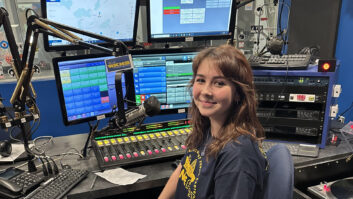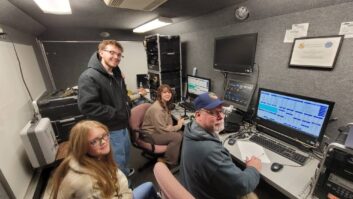One of the most powerful ways to maximize FM modulation is by peak clipping. Clipping off those peaks or the overshoots that wind up in a system can easily give an FM station 1 dB (20 percent) or more average modulation — for free. Some formats can tolerate the distortion that additional clipping causes to be even louder. Which ones depend on a few factors: Remember that in FM, the high frequencies are boosted during transmission and then rolled off in the receiver (pre- and de-emphasis). This means that the high frequencies will be clipped more, so formats that have a lot of high-frequency content (disco, some hip-hop, electronic synth pop, etc.) can’t be clipped as hard as, say, voice or classic rock can be. That said, 1 dB of clipping likely won’t be heard with any format at all. Any station’s format, stereo or mono, can get benefits with this device.
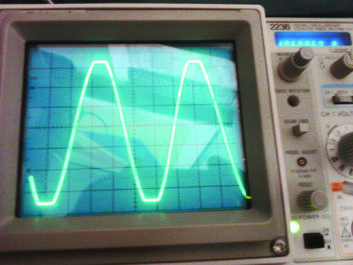
To illustrate how I set up the clipper at WGLS, I took the student with the brightest, most sibilant voice and increased the clipping until the sibilants in her voice just started to sound “smeared,” then turned it down until it stopped. I found that resulted in right around 2 dB of clipping.
Most composite clippers have cost well over $1,000; here is one that can be built for less than $25 and works just great. If there is a RadioShack still open near you, most of the parts can be purchased there, or go to any electronics parts house. It is easy to build, and the circuit layout is not critical — just use common sense during wiring.
Does It Clip the Pilot?
I know what you may be thinking: “Does it clip the pilot?” There is a Shakespearean play that answers this question: “Much Ado About Nothing.” Ten seconds with a spectrum analyzer shows that the pilot does not “ride” on the composite waveform, as some claimed it does — it sits right on the baseband at 19 kHz, just where it is supposed to be. In Fig. 1, we can see how 1 dB of composite clipping affects a 1 kHz sine wave.
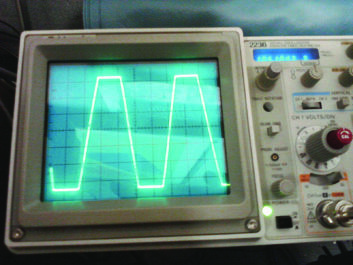
The clamping is clear at its top and bottom, but this amount of clipping would be barely audible. This clipper does not clip the pilot unless you drive it into over 5 dB of clipping, and let me assure you that your audio would become unlistenable far before that amount was reached. For instance, Fig. 2 shows the same 1 kHz sine wave clipped 5 dB. Not only does this look bad, it also sounds pretty nasty. Clipping this much will also begin to affect the 19 kHz pilot.
Keep it sane (2 dB or less) and you’ll be just fine! The clipper is designed to go in the analog composite audio feed to your FM exciter. It should ideally be the last thing before the exciter. It is fully compatible with IBOC, if used moderately. Obviously, it can’t be used with a digital input — analog only, please.
To eliminate waveform tilt and preserve phase integrity, the clipper is DC-coupled. It works with a single-ended, isolated power supply — a 12-volt wall plug transformer is perfect. The power supply is a “virtual ground” type in that the ground is actually the output of a 250-milliwatt power amplifier whose DC offset is maintained at exactly half the power supply voltage (6 volts with a 12-volt power supply). This makes the ground “stiff,” which insures that the clip is very sharp.
The Circuit Theory
The circuit schematic is shown in Fig. 3, and works as follows: The input goes through a 10 kilohm resistor, then to the high side of a 10 kilohm, 10-turn trim pot, which sets the input (clip) level. From there, the audio goes to half of a dual op-amp, configured as a voltage follower. The output of the voltage follower is very low impedance (making it a voltage source). This is the ideal way to drive the two clipping diodes, which go in between the op-amp’s output and ground. The second half of the op-amp raises the output voltage from the level set by the diodes (between 0.2 and 0.7 volts, depending upon the diodes used) back up to 3.5 volts peak to peak — the input voltage required by most exciters for 100 percent modulation.
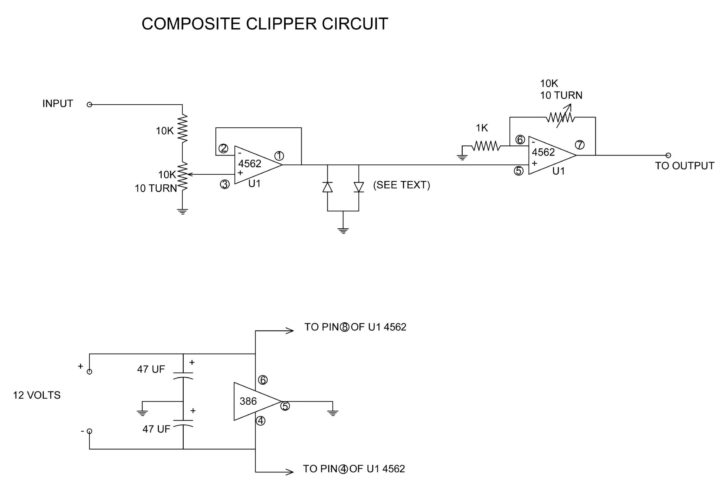
The voltage splitter is an LM386 IC, also widely available many places, including RadioShack (Catalog #2761731). The 10 kilohm trim pots and electrolytic capacitors are also available there.
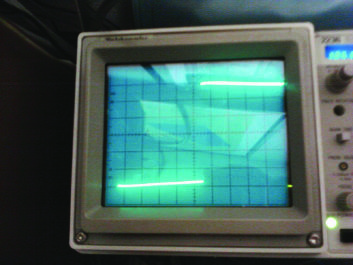
The clipping diodes used can be many different types. If you are shopping at RadioShack, you can try using 1N914 diodes (Catalog #2761620). They give you 50 of them for $3.50, which is good because you’ll want to match them as close as possible with your DVM. Use two with the closest possible voltage drop. That way, you’ll ensure that the clipping will be symmetrical. I used 1N5817 Schottky diodes in mine because their clip is quite sharp and their shunt capacitance is low (110pF at 1 MHz). I bought 55 of them for $5 at Amazon.com. For the op-amp, I used an LM4562, a high-performance op-amp, though a plain-vanilla NE5532 should also work OK. If you don’t want a sharp clipper, you can put a series resistance in between the voltage follower and the clip diodes — I’d start with around 100 ohms. This will “soften” the clip by rounding off the edges. A softer clip will result in less ultimate loudness and a reduction in distortion. You could even try running “soft into hard” clipping by running two of these units back to back, with the first one set up as a soft clipper followed by a hard one. I cut an RG-58 BNC jumper cable in half for the input and output connections.
Getting the Simple Setup Just Right
Setup of this is quite simple. Before you put the unit into service, set your pilot injection for exactly 9 percent injection. Next, put the unit in with its input control turned all the way up (the output will be distorted, so do it during an unimportant time). Set the output for the desired modulation (normally 100 percent, but can be more if you run subcarriers). Finally turn down the input until you reach 9 percent pilot injection again. For 0.5 dB of clipping, increase the input until the pilot injection reads 9.5 percent; for 1 dB the pilot should read 10 percent.
You can then turn the pilot down to 9 percent again if you want. It is normal to see the pilot level move about a bit; it’s caused by harmonics of the clipped L+R audio falling in the pilot region, NOT caused by clipping of the pilot. I usually keep the amount of clipping to 1 dB or less. It gives a 20 percent or better increase in modulation with virtually no audio artifacts.
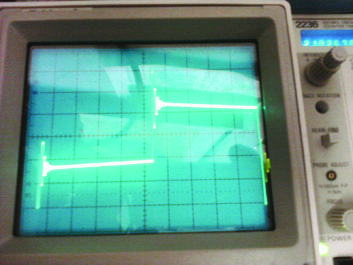
A composite clipper is essential if you still use a composite STL system because the typical composite system produces at least 10 percent in overshoots, which can be clipped off with little to no effect to the audio (because all they are doing is making your peak indicator flash). Fig. 4 shows a 1 kHz square wave at 100 percent modulation. This would be typical of a mono signal.
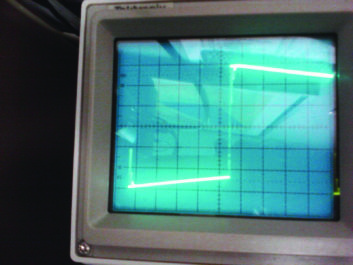
Notice how all six divisions of the scope are filled. Each division represents 25 kHz of FM deviation, so the square wave is deviating the carrier at ±75 kHz. We use a square wave for this test because it, like program material is considered a “complex” waveform (as compared to a simple sine wave). Also note the slight tilt in the square wave, which slightly affects the loudness on the station (around 7 percent modulation, or a fraction of a dB). This amount of tilt is common in the typical composite STL.
Fig. 5 shows what can happen to complex waveforms after they pass through a typical composite STL. Note the ringing on the waveform, which affects the average modulation of the station. To maintain the peaks at 100 percent modulation (±75 kHz deviation) it is necessary to reduce the average (RMS) modulation by about 50 percent. Also notice that there is more tilt in the square wave. In fairness, no STL system is this bad, but it is quite common to see overshoots in the 15–20 percent range.
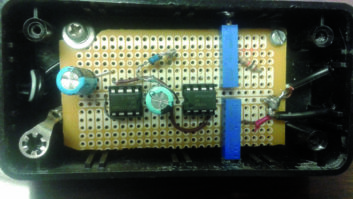
Fig. 6 shows the effect of the composite clipper on the overshoots from above. Note that the average modulation is back up to 100 percent (as in Fig 4). By clamping the overshoots (which weren’t part of the original program) we have restored modulation. Unfortunately, the tilt still remains, which costs this station about 22 percent modulation (again, this is an extreme case). The good news is that 1 dB of additional clipping will increase the average modulation by about 20 percent, giving all this back!
You can see the prototype in Fig. 7. It has since been retired from service and replaced with a cleaner-looking unit. You’ll see the prototype only used one electrolytic capacitor that was connected between the plus and minus power supply input — the two-capacitor design is more stable.
I think that you will find this unit very useful at your FM station.
Dana Puopolo is chief engineer at WGLS(FM), Rowan University, in Glassboro, N.J.

